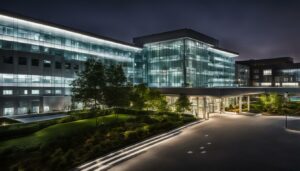In the digital era, the workplace has evolved beyond the physical confines of the office. As employees communicate through various online platforms, cyberbullying has emerged as a growing concern. But what exactly are the legal implications of cyberbullying in the workplace? In this comprehensive guide, we’ll delve into the complex world of cyberbullying and its legal consequences for both employees and employers.
Understanding Cyberbullying in the Workplace
What is Cyberbullying?
Cyberbullying is a form of harassment that occurs through digital means, such as emails, text messages, or social media platforms. In the workplace context, this behavior can involve derogatory comments, gossip, or threats aimed at a colleague or group of colleagues. Cyberbullying can be overt, such as direct insults, or more subtle, like spreading rumors or sharing personal information without consent.
How Does Cyberbullying Affect the Workplace?
Cyberbullying in the workplace can lead to a toxic environment, lower productivity, and higher turnover rates. The psychological impact on victims may result in increased stress, anxiety, and depression, which in turn can affect job performance and overall well-being. Furthermore, the repercussions of cyberbullying can extend beyond the workplace, damaging both personal and professional relationships.
The Legal Landscape Surrounding Cyberbullying
Anti-Bullying and Harassment Laws
Many jurisdictions have enacted laws specifically targeting workplace bullying and harassment. These laws often require employers to take reasonable steps to prevent and address such behaviors, and they may provide legal remedies for victims. In some cases, cyberbullying can also fall under general harassment or discrimination laws if it is based on protected characteristics such as race, gender, or disability.
Employment and Labor Laws
In addition to anti-bullying legislation, employment and labor laws may also come into play when addressing cyberbullying in the workplace. Employees who are victims of cyberbullying may have grounds for a wrongful dismissal or constructive dismissal claim if they are forced to leave their job due to the hostile work environment. Employers may also be held liable for failing to provide a safe work environment, which includes protection from online harassment.
Criminal Laws
In extreme cases, cyberbullying may lead to criminal charges. Depending on the jurisdiction, criminal offenses such as harassment, stalking, or threats may apply to online conduct. Moreover, if cyberbullying involves sharing explicit images or videos without consent, it could result in charges related to privacy invasion or revenge porn.

Employer Responsibilities and Best Practices
Creating a Comprehensive Anti-Bullying Policy
Employers have a legal and ethical responsibility to protect employees from cyberbullying. This starts with creating a clear and comprehensive anti-bullying policy that covers both offline and online harassment. The policy should outline unacceptable behaviors, reporting procedures, and consequences for violations. It should also emphasize the importance of confidentiality and protection from retaliation for those who report incidents.
Training and Awareness Programs
To effectively combat cyberbullying, employers should invest in training and awareness programs for employees and managers. This includes educating staff about the various forms of cyberbullying, how to recognize them, and how to respond appropriately. Regular training sessions can reinforce the company’s commitment to a respectful work environment and ensure that employees understand their rights and responsibilities.
Monitoring and Responding to Incidents
Employers must be vigilant in monitoring workplace communications and taking swift action to address cyberbullying incidents. This involves establishing clear reporting procedures, conducting thorough investigations, and enforcing appropriate disciplinary measures. It’s crucial that employers take a proactive approach in addressing complaints, as failing to do so could result in legal liability and a damaged reputation.
The Role of Technology in Preventing and Identifying Cyberbullying
Harnessing the Power of AI and Analytics
As technology continues to advance, organizations can leverage AI and analytics tools to identify and address cyberbullying more effectively. By monitoring and analyzing digital communication patterns within the workplace, these tools can help detect potential instances of cyberbullying, enabling employers to intervene before the situation escalates. However, it’s crucial to strike a balance between protecting employees and respecting their privacy, ensuring that such monitoring is conducted ethically and within the confines of the law.
Encouraging Positive Digital Behavior through Gamification
Another innovative approach to combating cyberbullying in the workplace involves gamification, the application of game-like elements to non-game contexts. By implementing gamified systems that reward employees for positive digital behavior, organizations can create a more engaging and supportive online work environment. For example, employees could earn points or badges for demonstrating empathy and inclusiveness in their online interactions, fostering a culture of respect and collaboration.
Empowering Bystanders to Take Action
While addressing cyberbullying is often focused on the victim and the perpetrator, the role of bystanders should not be underestimated. Employees who witness cyberbullying can play a crucial role in creating a safe and inclusive workplace by reporting incidents and offering support to victims. To empower bystanders, organizations should provide training on how to identify and respond to cyberbullying, as well as emphasize the importance of taking action rather than remaining silent. By creating a collective sense of responsibility, workplaces can become more resilient against the destructive effects of cyberbullying.
What Employees Can Do to Combat Cyberbullying
Recognize and Document Incidents
If you suspect you are a victim of cyberbullying in the workplace, it’s crucial to recognize and document the incidents. Keep records of all relevant communications, including emails, text messages, and social media interactions. This documentation can serve as evidence if you need to report the behavior or seek legal remedies.
Report the Cyberbullying
Inform your supervisor, human resources department, or another appropriate authority within your organization about the cyberbullying. Follow your company’s reporting procedures, and provide them with the documented evidence of the incidents. Remember that your employer has a legal obligation to address the situation and protect you from further harassment.
Seek Legal Advice
If your employer fails to adequately address the cyberbullying, or if you experience retaliation for reporting the incidents, consider seeking legal advice from an employment lawyer. They can help you understand your rights and guide you through the process of pursuing legal remedies.
Conclusion
Cyberbullying in the workplace is a serious issue with significant legal implications for both employees and employers. It’s essential for organizations to create comprehensive anti-bullying policies, invest in training and awareness programs, and actively address incidents to foster a safe and respectful work environment. Employees can combat cyberbullying by recognizing, documenting, and reporting incidents, as well as seeking legal advice when necessary.
Frequently Asked Questions (FAQs)
Q1: Can employers be held liable for cyberbullying in the workplace?
A1: Yes, employers can be held liable if they fail to take reasonable steps to prevent and address cyberbullying in the workplace. This includes creating and enforcing anti-bullying policies, providing a safe work environment, and appropriately responding to reported incidents.
Q2: What is the difference between cyberbullying and general workplace harassment?
A2: While both involve unwelcome and offensive behavior, cyberbullying specifically occurs through digital means such as emails, text messages, or social media platforms. Workplace harassment can occur through various forms of communication, both online and offline.
Q3: Can cyberbullying in the workplace lead to criminal charges?
A3: In extreme cases, cyberbullying may result in criminal charges. Depending on the jurisdiction, offenses such as harassment, stalking, or threats may apply to online conduct. Additionally, sharing explicit images or videos without consent could lead to charges related to privacy invasion or revenge porn.
Q4: What steps should employers take to prevent cyberbullying in the workplace?
A4: Employers should create comprehensive anti-bullying policies, invest in training and awareness programs, establish clear reporting procedures, and actively monitor workplace communications. They must also promptly address incidents and enforce appropriate disciplinary measures.
Q5: What should employees do if they are victims of cyberbullying in the workplace?
A5: Employees should recognize and document incidents, report the cyberbullying to appropriate authorities within their organization, and seek legal advice if necessary. It’s essential to understand their rights and the legal remedies available to them.










